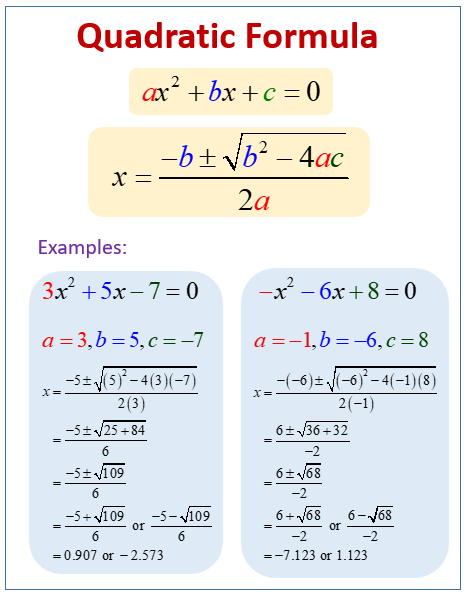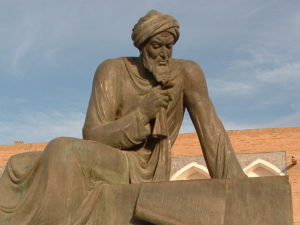Algebra is the study of mathematics by using a combination of symbols and values and the rules for manipulating those symbols and values. In its most basic form, it involves using equations to find the unknown. Linear equations, the quadratic formula, functions, and much more are all familiar examples of algebra. Algebra became recognized as a separate branch of mathematics thanks to work of the Persian mathematician Muhammad ibn Musa al-Khwarizmi.
The Roots of Algebra

(Credit: www.onlinemathlearning.com)
This history of any field of mathematics rides on a curvy road. This is no-less true for algebra. The roots of algebra can be traced back to Babylonian and Greek mathematics, at least 2000 BCE. We have evidence of stone tablets from Babylonian mathematicians who were hitting on the same ideas of algebra. The representation was not the same and the symbols they used were unique to their culture, but the fundamental spirit of algebra is evident. The Babylonians used complex arithmetic methods to solve modern algebraic problems. The Egyptians also worked with algebraic ideas but they were much less advanced that the Babylonians and did not advance much past solving linear equations.
The next big reservoir of algebraic thought came courteous of the Greek mathematicians, in particular a person named Diophantus of Alexandria. Diophantus lived in Alexandria, Egpyt in the 3rd century. Little is known of his life except his works and his age. He authored a thirteen book series titled Arithmetica that unfortunately has not survived in its full form. The portions that have survived show algebraic equations being solved. Diophantus and the Greeks devised a system of geometric algebra, using squares to solve for equations.
The Indian mathematician Brahmagupta was another person who influenced the development of algebra. Brahmagupta lived during the 7th century in northwest India. He wrote many influential works with a focus on mathematics and astronomy. His most famous work, Brahmasphutasiddhanta, provided solutions to linear and quadratic equations and is one of the earliest known texts to treat zero as a number. Much of his work moved from India the the Middle East, and was not known by Western Europe until many centuries later.
The Compendious Book on Calculation by Completion and Balancing

These earlier systems, especially the Greek and Indian, provided the inspiration for Persian mathematician al-Khwarizmi. Al-Khwarizmi was born in 780 and fortunate enough to have studied and worked in the House of Wisdom in Baghdad. The House of Wisdom was an enormous library and a major intellectual center of the time. In the 820s he wrote The Compendious Book on Calculation by Completion and Balancing, forming the foundation of algebra and establishing it as an independent discipline from arithmetic and geometry.
The Arabic title of his work is Al-jabr wa’l muqabalah, and it is from “al-jabr” that we get the term algebra. As the title indicates the text stresses the completion and balancing of equations. Here is a simple example of each type of operation:
- Completion – Take the equation x+6=36. To complete this equation, we subtract 6 from each side to get x=36-6, or x=30.
- Balancing – Take the equation x+y=y+30. To balance this equation we cancel y from both sides and get x=30.
His treatise is important because it presented the first systematic solution of linear and quadratic equations.
Algebra Today
Today algebra is used in a variety of mathematical fields, practical applications, and everyday life situations. Numbers and equations are used in everyday life whether we realize it or not. We use it in finance when we calculate loan interest, our return on investment, or a currency exchange rate. We use algebra when calculating rations. Ratios are relationships between different quantities. Twice as many guests are now showing up to your party? We need to balance the equation and add twice as many ingredients to that soup we are cooking. Are you a United States resident traveling outside the country? Most of the world uses the metric system for measurements and we’d use algebra to convert these measurements. We use algebra in statistics, graphing, computer coding, measuring calculations such as area, volume, and mass, and more.
Intuitively, we use algebra all the time when we solve for unknown variables. Abstractly, algebra helps us with our critical thinking and problem solving skills. Lastly many other branches of mathematics are dependent on algebra. Finding the area under a curve requires the use of calculus, and calculus would not be possible without algebra.
Continue reading more about the exciting history of science!
